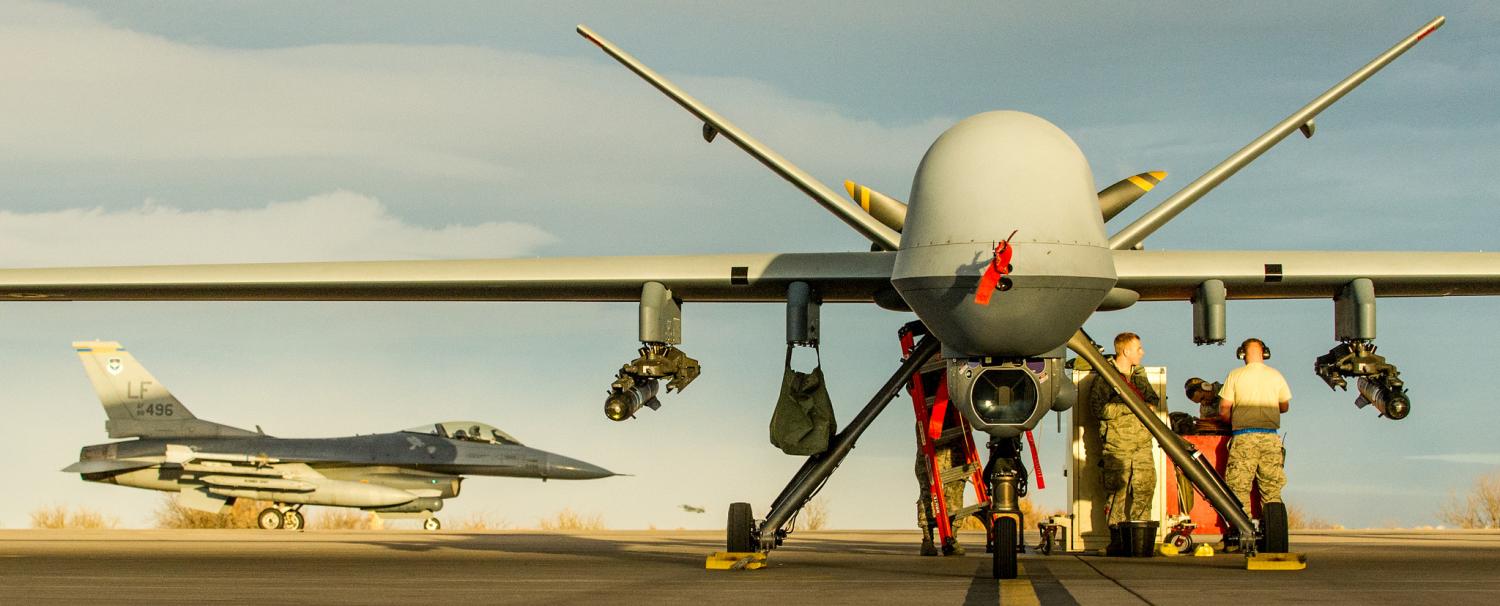Defence Minister Christopher Pyne’s announcement last week that Australia is buying 12 to 16 new MQ-9 Reaper drones that can fire air-to-ground missiles gets the Australian Defence Force into a capability niche that other modern armed forces, particularly the US, joined years ago.
The Reaper is a derivative of the MQ-1 Predator, which the US first used operationally in the Balkans in the late 1990s, and since then extensively in Afghanistan and Iraq. The Reaper is more advanced and has greater endurance, but like the Predator, it is designed to operate in what the military calls “permissive” environments where there is little risk of the drones being brought down by enemy fighters or air-defence missiles because the enemy doesn’t have any.
So the Australian Strategic Policy Institute’s Malcolm Davis is quite right when he says that the “Reaper is going to be most likely used for supporting activities in the South Pacific … If you have the army going in from LHDs [the navy’s maritime landing ships] the Reaper can be forward deployed into air bases for ground operations ashore.” The 2016 Defence White Paper set out the ambition for drones this way:
The new armed medium-altitude unmanned aircraft will provide enhanced firepower and intelligence, surveillance, and reconnaissance support to a range of missions including counter-terrorism missions overseas, while augmenting our surveillance capability for search and rescue, humanitarian assistance and disaster relief, and other tasks.
In other words, these are not weapons designed for high-end warfare against a technologically advanced adversary.
So, given that Australia has reduced its Afghanistan presence over the years and along with its major ally is shifting its defence emphasis from terrorism to “peer competitors”, it makes sense that Australia is only buying a relatively small number of Reapers.
Even if this is just a niche capability, there is an argument that the Reapers will keep the ADF at the leading edge of so-called UCAV operations (unmanned combat air vehicles). Unfortunately though, for Australia, there is no clear path after Reaper to the next generation of UCAV because US development of such weapons has more or less stopped.
The US Navy wanted a stealthy drone that could be used against advanced adversaries with high-quality air defences, but that program has stalled and instead it will get a drone that basically serves as an airborne petrol station for its crewed fighters.
The US Air Force doesn't have a stealthy armed drone in mind either, at least not one that we really know about. There is the mysterious RQ-180 project, but the fact that this project remains classified may point the difficulty of getting these weapons into the mainstream – as this article argues, the RQ-180 program is perhaps being hidden not because the US doesn’t want the enemy to know about it, but because such a weapon threatens the US military’s aviation hierarchy, which is dominated by pilots who prefer to see aerial combat remain the preserve of aircrews rather than jumped-up video-game jockeys.
That’s a bureaucratic hurdle which China may not need to negotiate, and as the recent Zhuhai Air Show demonstrated, there has been an explosion of drone development activity in China in recent years. The Financial Times carried a couple of useful reports on why this might be happening.
China’s most interesting model was a stealthy armed drone which fits exactly into the space the US now seems to be vacating.
The most interesting model to appear in Zhuhai was the CH-7, a stealthy armed drone which fits exactly into the space the US now seems to be vacating. In fact, one of the designers of the CH-7 cheekily compared it to the RQ-180 – the US barely acknowledges the existence of this design even though it is purportedly in service, and yet China is openly displaying and talking about its new design even though it won't enter service for some years. It’s rather ironic given that the US constantly demands that China show more “transparency” about its military programs.
When it comes to the development of stealthy combat drones, momentum appears to be with China right now. That’s a problem for Australia, which is just beginning its entry into the stealth aircraft game with the F-35 Joint Strike Fighter. If future governments decide an additional stealthy air combat capability is needed against a highly capable adversary, it would have no option but to buy more F-35s. Australia’s bargaining position would be strengthened if there were alternatives.
Perhaps Australia will need to look to Europe, where there are a couple of stealthy UCAV research projects happening. Australia will have to hope that one or both of these projects mature into a fully fledged development effort.
Australia might even offer to take part in one of the research projects.

